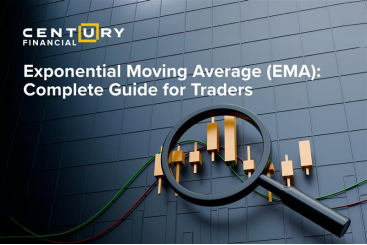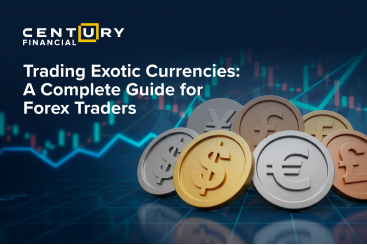Thursday, July 25, 2024
10-Year Treasury Bond Yield: What It Is and Why It Matters
By Century Financial in 'Blog'

.jpg)
Ever wondered what the 10-year Treasury bond yield is and why it's such a big deal? Let's break it down in simple terms.
What is it?
Think of it as the interest rate the U.S. government agrees to pay when it borrows money for a decade. It's not just any interest rate—it's a benchmark that influences other interest rates and gives us a peek into what investors think about the economy.
Why is it important?
It sets the tone for other interest rates:The 10-year Treasury bond yield is like the trendsetter for various interest rates. When it goes up, borrowing costs typically rise, slowing down spending on homes, cars, and business expansions. Conversely, when it goes down, borrowing becomes cheaper, potentially boosting economic activity.
It's a health check for the economy:This yield indicates investor sentiment about future economic conditions. A rising yield usually means investors expect more robust economic growth and higher inflation, so they demand higher returns. A falling yield, on the other hand, signals that investors are seeking safety, which often points to economic uncertainty or anticipated slowdowns.
Current scenario:
Currently, the 10-year Treasury bond rate is at 4.32%, up from 3.77% in 2023 but still below the long-term average of 4.25%. This fluctuation tells us a lot about investor confidence and economic outlook.

Source: Board of Governors of the Federal Reserve System (US)
Building a share trading plan
A shares trading plan provides a clear framework to analyze your past and future trades. Below are the key factors that can be included:
How do 10-year Treasury yields work?
The U.S. Treasury bond issues these bonds, known as T-notes, with a face value of $1,000 and pays interest every six months. Banks and financial companies buy them in auctions and then resell them in the secondary market, where the real action happens.
Here's a crucial point: the yield (or the effective interest rate) you get depends on the bond's market price. If you buy the bond for less than its face value, your yield is higher, and vice versa. Bond prices and yields move inversely—when one goes up, the other goes down. This dynamic is driven by market demand, which fluctuates based on economic conditions.

Why do people buy Treasuries?
U.S. Treasury bond securities are risk-free because they're backed by the government's promise to repay. Investors flock to these safe havens when the economy looks shaky, pushing prices up and yields down. Conversely, when the economy is booming, investors seek higher returns elsewhere, lowering demand for Treasuries and increasing yields.
The role of the FOMC
The FOMC, or Federal Open Market Committee, is a powerful group within the Federal Reserve System that plays a critical role in setting monetary policy for the U.S. The FOMC's decisions to raise or lower the target federal funds rate and other monetary policy tools influence interest rates throughout the U.S. economy. These actions affect borrowing costs, economic activity, and inflation.
The FOMC consists of voting members, including the Chair of the Federal Reserve Board, Jerome Powell, the Federal Reserve Bank of New York President, John C. Williams, and a rotating group of other Reserve Bank presidents. Their primary responsibility is to set the target federal funds rate, which influences other short-term interest rates.
The Fed’s dual mandate aims for maximum employment and price stability. If the economy overheats or inflation rises, the FOMC might raise the rate, making borrowing more expensive and slowing economic activity.
How do the yield rates affect your investments?
In financial markets
The 10-year Treasury bond yield is used to value financial assets. It is commonly used as a discount rate in models that value future earnings and cash flows. When the yield is low, it can boost stock prices because the present value of future earnings is higher. A higher yield can lead to lower stock valuations as the cost of capital increases, making equities less attractive compared to the risk-free return on
In currency markets
Bond yields are an excellent indicator of a nation’s stock market strength, which increases demand for the nation’s currency.
For example, U.S. bond yields gauge the performance of the U.S. stock market, thereby reflecting the demand for the U.S. dollar.
Let’s look at one scenario: Treasury bond yields indicate a strong economy and boost currency demand. High yields attract foreign investors, increasing the currency's value. For example, U.S. bond yields reflect the strength of the U.S. stock market and the dollar. Bond yields and currency attractiveness increase when interest rates rise, leading to currency appreciation.
In commodity markets
Conceptually, monetary policy can affect commodity prices through at least four channels. But for an easy explanation purpose, the most relative will be its effect on investment and consumption.
Interest rates affect investment and consumption, driving current and future commodity consumption. A higher yield could lead to stronger currency, leading to expensive commodities. Expensive commodities might eventually lead to a negative price impact.
The bottom line
The 10-year Treasury bond yield is used to determine investor confidence in the markets. It moves to the inverse of the price of the 10-year Treasury note and is considered one of the safest.
This marketing and educational content has been created by Century Financial Consultancy LLC (“Century”) for general information only. It does not constitute investment, legal, tax, or other professional advice, nor does it constitute a recommendation, offer, or solicitation to buy or sell any financial instrument. The material does not take into account your investment objectives, financial situation, or particular needs.
The opinions expressed by the hosts, speakers, or guests are their own and may change without notice. Information is based on sources we consider to be reliable; however, Century does not guarantee its accuracy, completeness, or timeliness and accepts no liability for any loss arising from reliance on this content.
Trading and investing involve significant risk, and losses may exceed initial deposits. Past performance is not indicative of future results. CFDs and other leveraged products are complex instruments that may not be suitable for all investors. Please ensure you understand how these products work, the associated risks, and seek independent professional advice if necessary.
Century is licensed and regulated by the UAE Capital Market Authority (CMA) under License Nos. 20200000028 and 301044.
Please refer to the full risk disclosure mentioned on our website.




__1439480927.jpg)




.png)
.png)
.png)
.png)


